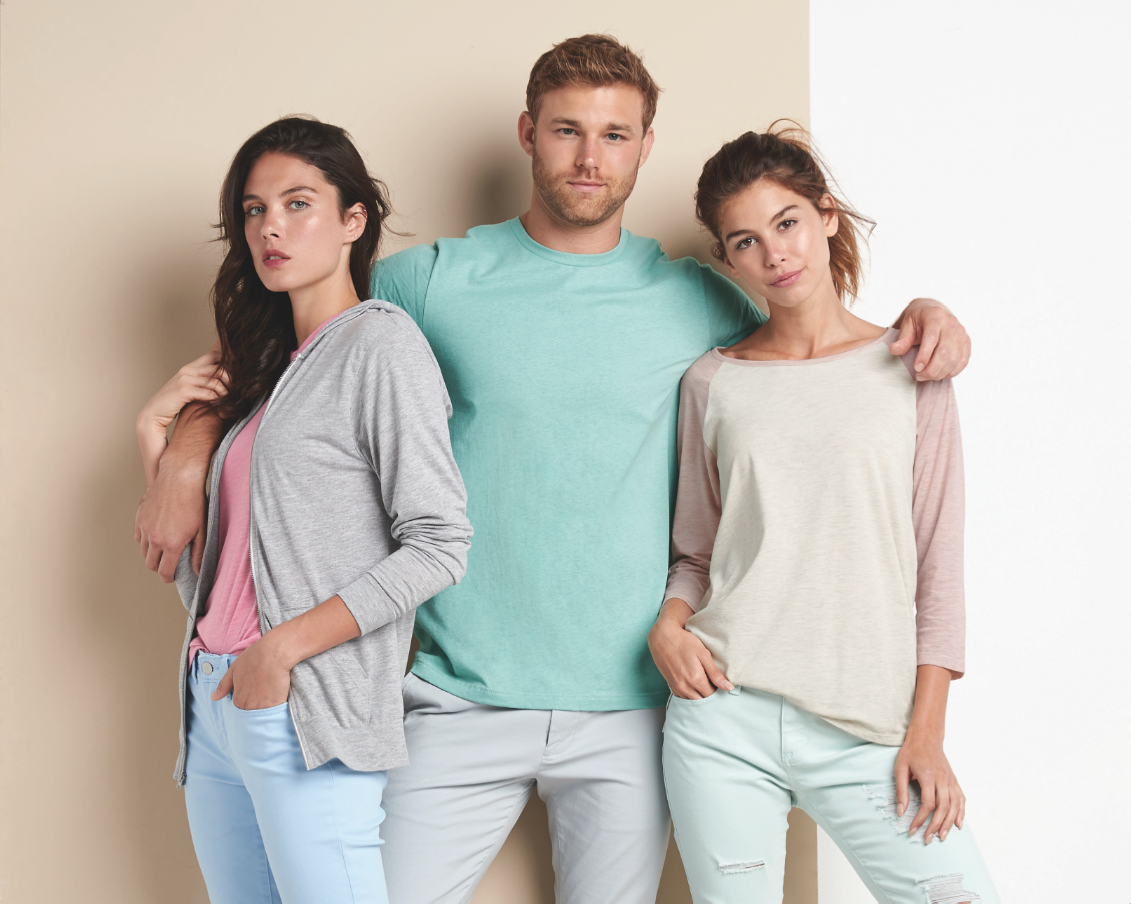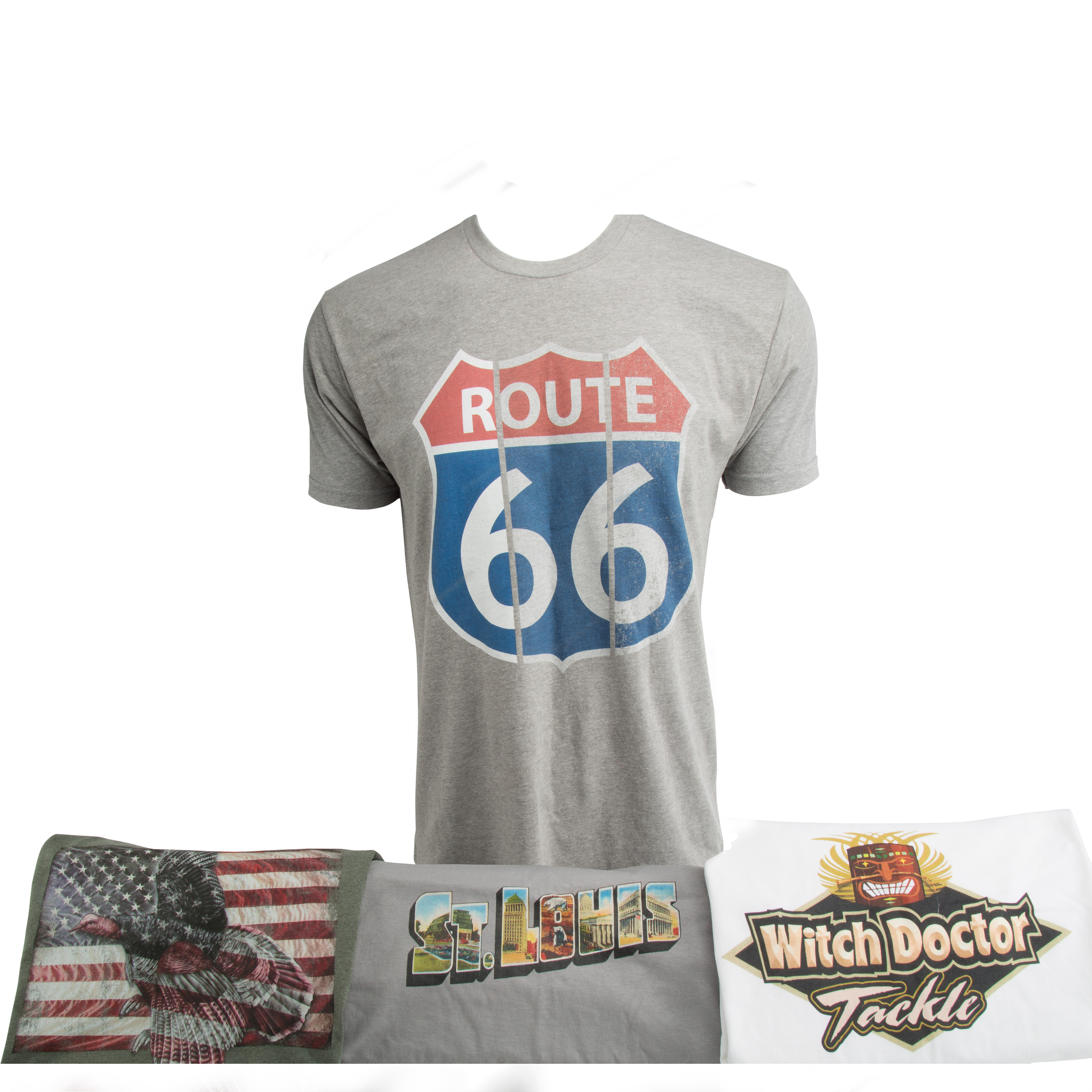It’s an unlikely source of inspiration for promo, but “Dude, Where’s My Car?” did give us this weirdly applicable line from Ashton Kutcher: “Your best T-shirt should be like your bed—it just feels like home when you are in it.” As 2019 has unfolded and everyone in the apparel world has looked to see if trend predictions will hold true, one matter (if we can put our spin on Kutcher’s line) is clear: Nobody can sleep on the power of T-shirts. Even when industry figures have found success selling the promotional apparel option, they can’t rest on their laurels, as staying on top of trends will help keep them atop the figurative sales charts.
To help you do the same, we reached out to a handful of apparel experts to get their best advice on selling promotional T-shirts. Here, Joey Knight, assistant division director of promotional products for Paramount Apparel International Inc., Bourbon, Mo.; Mary Bostwick, director of marketing, customer service and inside sales for Delta Apparel, Duluth, Ga.; and Bruce Jolesch, president of PXP Solutions, Dallas, shared their thoughts.
Still Growing
Apparel is already the promo industry’s largest sales category, but T-shirts, in particular, have become a sensation. In March 2018, Credence Research Inc. released its Custom T-shirt Printing Market report, revealing that the “global market for custom T-shirt printing is expected to witness considerable growth with rising income level of households globally and with shifting trends towards fashionable apparels.” Also giving a nod to the “rapid penetration of e-tailing in the fashion space,” the report commends custom-printed and designed T-shirts, predicting that through 2025, the global market for the T-shirt printing industry should cross $10 billion.
“The public enjoys owning T-shirts, now perhaps more than ever,” Jolesch said of the garments’ ubiquity. “T-shirts are also a statement, a philosophy, a belief and a message, and they can be a relatively inexpensive way to state that message.”
To live up to the billing Jolesch assigned to them, T-shirts need to rely on suppliers, distributors and manufacturers to be innovators who not only react to end-users’ preferences, but also predict what consumers might want. At Paramount, that student-like curiosity has helped Knight and her colleagues earn high marks for their direct-to-garment expertise, with diligence proving the masterstroke for the Missouri bunch.
“Customers’ needs are ever-evolving and the need for quick turn, full-color prints finally pushed us to purchase our Kornit machine,” Knight said, referring to the digital garment printer. “Our team spent about six months to set up and train so we could come to market with the abilities to print on many material blends and colors as not to limit the creativity of our customers.”
Creativity is key because of how popular T-shirts have become. The public’s approach to owning tees has greatly altered the apparel industry, as the aforementioned global study showed, with their different feels and textures increasing their esteem not only among wearers but also providers.
“I believe T-shirts have become more mainstream than ever in the last few years,” Bostwick said. “They are a casual addition to the workplace with the aid of a jacket or something that’s ready to wear on a night out. With the new fabrications and styles, there are so many more options that we have had in the past. This allows us to wear tees more and more.”

Going Corporate
In donning T-shirts with such frequency, end-users are proving themselves walking proof of Knight’s assertion that “Everyone owns a favorite T-shirt, if not many.” While constantly standing out as vivid expressions of pride in any number of areas, T-shirts have also become a frequent element of companies’ apparel purchases for their employees, with McDonald’s and Red Robin calling on them to replace polo shirts for their hires.
“As the years go by, tees have become way softer and lighter in weight,” Bostwick said. “I have noticed the trend in fabric weight comes and goes, as do colors. Currently, lighter and softer are the fabrics most requested. We do, however, have a segment of customers looking for the standard heavier 100 percent cotton tee, which we see a lot in uniform requests. Another trend in uniforms are the performance tees, which have moisture wicking and anti-microbial properties needed in industrial settings like food service, lawn care and construction.”
“Corporate America uses T-shirts in a variety of ways—grand openings, celebrations, appreciations, new events—the list is endless,” Jolesch said. “Candidly, some are kept more than others, again for myriad reasons. There are, now more than ever, a variety of different fiber contents in shirts, from 100 percent cotton to 100 percent polyester, to blends, to cotton/spandex, to organic cotton and so forth. Some of it is driven by the client, and some of it is driven by the price/budget for a project.”
No matter the consideration, comfort and reliability need to stand as cornerstones of anyone’s T-shirt philosophy, especially now that the apparel items are worn in so many different settings and scenarios.
“In my opinion, they are one of the most versatile promotional items because they are personal for many reasons, whether it be your family company, your favorite place to eat or a place you visited, or [it’s] simply a fit and color you like,” Knight said. “The possibilities are completely endless with T-shirts, and think about how many times your favorite shirt is worn in public, passing along the message intended. It’s mind-blowing if you really think about it.”

Standing Out
Given that end-users’ needs are always expanding, as Knight said, she and her peers, both within her company and the industry, must be on top of trends so as to distinguish themselves among a growing number of T-shirt suppliers. The same goes for distributors. Just about everyone is selling T-shirts, so you need to provide expertise and value that sets you apart. Our experts had some tips for that.
“One way to separate a company is by branding the shirt with a private label, so instead of saying Bella+Canvas, for example, it says Mercedes-Benz, Home Depot or Ford, or a brand name,” Jolesch advised. “People will keep those garments longer, but it is more than just a T-shirt. You have a variety of customers—employees purchasing a shirt off their company’s website because they like the fabric or they like what the shirt says, or how it wears or the private label—and when someone makes a purchase, they tend to keep it a longer time. Private labeling and better fiber content are two ways to create a brand, not just a T-shirt.”
Having noted that it is her hope that direct-to-garment printing changes the way that people sell tees by minimizing concerns over size run, print size, colors and more, Knight made trying direct-to-garment possibilities her top suggestion.
“Explore those options with your clients, break the one- to two-color print cycle and spice it up a little bit,” she said. “Education is also key when it comes to shirt offerings. Quality shirts lead to quality prints.”



